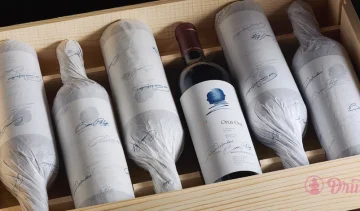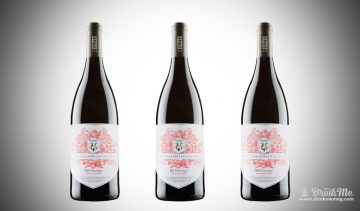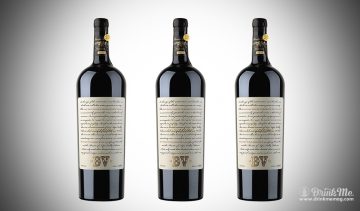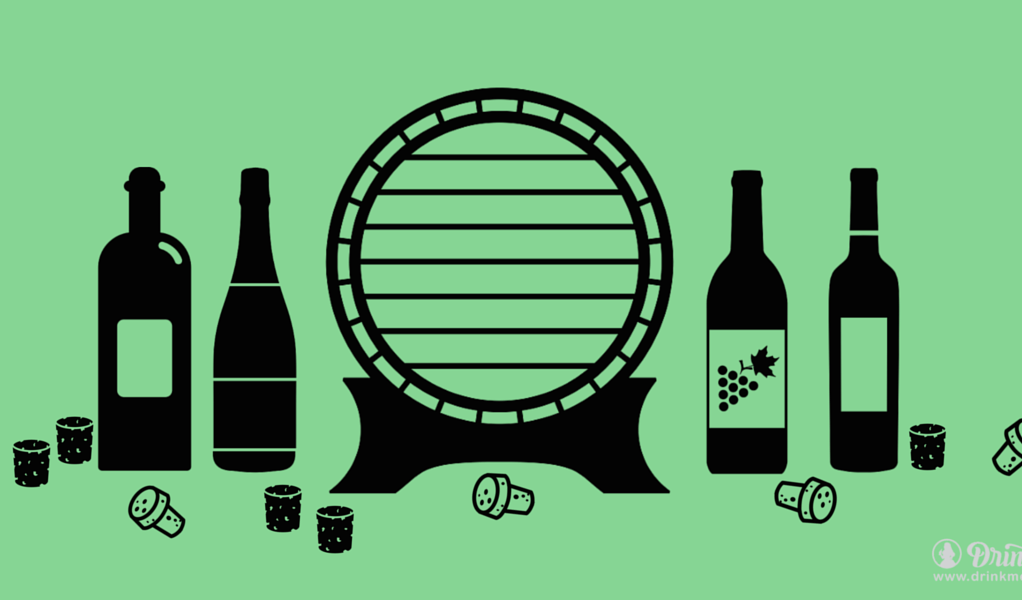The joy of opening and drinking aged wines is what oenophiles live for. Deliberating and discussing an old treasure can be a lively debate – Is it too young? When will it reach peak? How much longer will it last? Is it spoilt? The aim of this article is to focus on the last question, as it can be difficult to tell, especially if drinking an unfamiliar variety.
Ultimately we’re talking about a subjective topic (as is wine appreciation as a whole), but we’ve prepared some tips to give you an indication about whether the vino in your glass is singing a complex, nuanced song or crying out for the sink treatment.
We have five tips, but before diving in let’s first explore how and why wines spoil. I’m no hippy, but I do believe wine is somewhat a living organism, and there is a whole array or ailments that can impact the delight/despair it provides. For the purpose of simplicity I’ve categorised spoilt wine into three categories; corked, cooked and over-aged
- A wine becomes corked when the cork closure has become contaminated with cork taint, a chemical called TCA, most commonly a result of proximity to cleaning products in the winery. This taint is subsequently transferred to the wine which spoils it. This fault can impact wines of any age.
- A wine becomes cooked when exposed to volatile temperature fluctuations for too long, for example a wine rack in a kitchen! This yo-yo effect doesn’t always mean it’s spoilt, but poor storage conditions are a bit like excessive pipe smoking and daily participation in extreme sports – they considerably increase the rate of aging and make life expectancy very unpredictable!
- Little explanation is required for over-aged It’s worth noting though that storage conditions have a considerable impact on the rate of aging.
1) Know What You’re Drinking
Determine what variety it is and consider if it’s wine which is suitable for aging (90% of all wine isn’t). There’s a much higher likelihood of enjoying a 1990 Left Bank Bordeaux, than a 1990 Chilean Merlot. Most people with wine knowledge will know that age-worthy wines such as Bordeaux, Burgundy, Brunello, Barolo (that’s four legendary B’s!) improve with time, but what about lesser known varieties? The common factor in the aforementioned wines is big structure. Whether high in tannins or acidity they all have structure which helps them stand the test of time. Structure either comes naturally through composition of grapes like Cabernet Sauvignon, Malbec or structure is imparted through production methods such as extended contact with skins, extended maturing in barrel. Knowing the producer and the production methods is important. What makes aged wines so fun is the unpredictable factor – there is no hard and fast rule, and there are always exceptions.
2) Look At The State Of The Cork
A positive indicator is some moisture. A delicate, crumbling cork that is difficult to remove is usually fine, as long as there’s some moisture at the bottom. If a wine has been stored upright then lack of contact between the liquid and the cork will cause it to dry out and contract, thus increasing the risk of letting in air. As such, a dry cork that feels loose should be setting off alarm bells in your head. Also look out for cork bleeding. This is when wine has bled into the cork. A little is fine, but the further the wine has bled into the cork, the higher the likelihood for a broken seal, and thus a spoilt wine. See the photos below ranging from none, partial and complete cork bleeding.
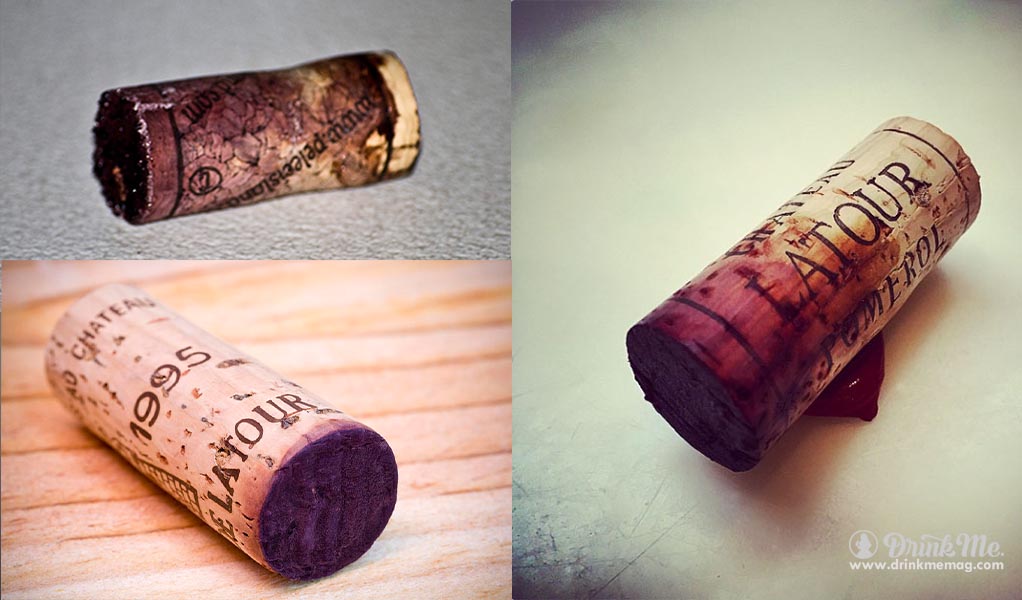
3) Look At The Colour
Generally speaking, wine gets browner with age. This applies to both red and white wine. Red wines take on a bricky appearance and white wines head towards a dirty, dull orange colour. Try and tilt the glass over a white background to get a really good look at the hue, and see if the colour changes towards the rim. The below photo is the output of an experiment conducted by the Australian Wine Research Institute into the effectiveness of screw caps v corks. We’re not going to get dragged into that debate here, but the photo is brilliant as it shows the varying shades of spoilt white wine. Aside from hue, also look at the transparency. Opaque is fine, but the more murky and cloudy it is, the more liable it is to make your eyes water.
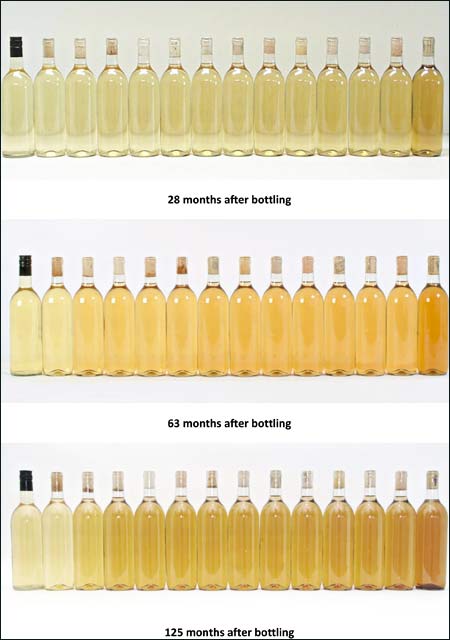
4) Smell It
The smell (and taste) of a corked wine is distinctively different from cooked and over-aged wines. Corked wines will provide unpleasant notes of mouldy cardboard, wet dog or a damp cloth with washing up liquid. Whereas cooked or over-aged wines are more sour and dank. You may well get a fousty smell, not too dissimilar to a sofa in an old people’s home. Spoilt wines can throw off all kinds of weird scents. As a general rule of thumb, if it causes involuntary face scrunching then it’s probably unsavoury!
5) Taste It
On the whole you’re looking out for a continuation or variation of the scents described above. If you can taste fruit (even if faint), this is usually a positive signal. A common description of spoilt wine is vinegar, and it’s so apt. These vinegar notes often over power anything else going on. For corked wines, look out for an abrupt (and unpleasant) finish. For over-aged wines look out for a complete absence of fruit and lingering sour finish. If you’re opening a wine with significant age, I would not recommend breathing or aerating. You may have read about aged wines ‘falling apart’ once open. It’s a beauty to behold when the wine you’re drinking is changing in the glass more quickly than you can comprehend – don’t accelerate it with aeration.
Regardless of how you get on with the above checks, I think it’s always worth taking a few small sips. Fortune favours the brave, and even if it’s not delicious, it cannot turn toxic so it’s very unlikely to do you any harm, especially if you spit it out. Call me morbid if you like, but I think of it as a post mortem tasting. I find it can be an insightful and interesting experience to pay close attention and attempt to understand what’s gone wrong to get the wine to such a point.
If you’re concerned about how you’re storing wine, then take a look at our wine storage guide for advice and recommendations.


